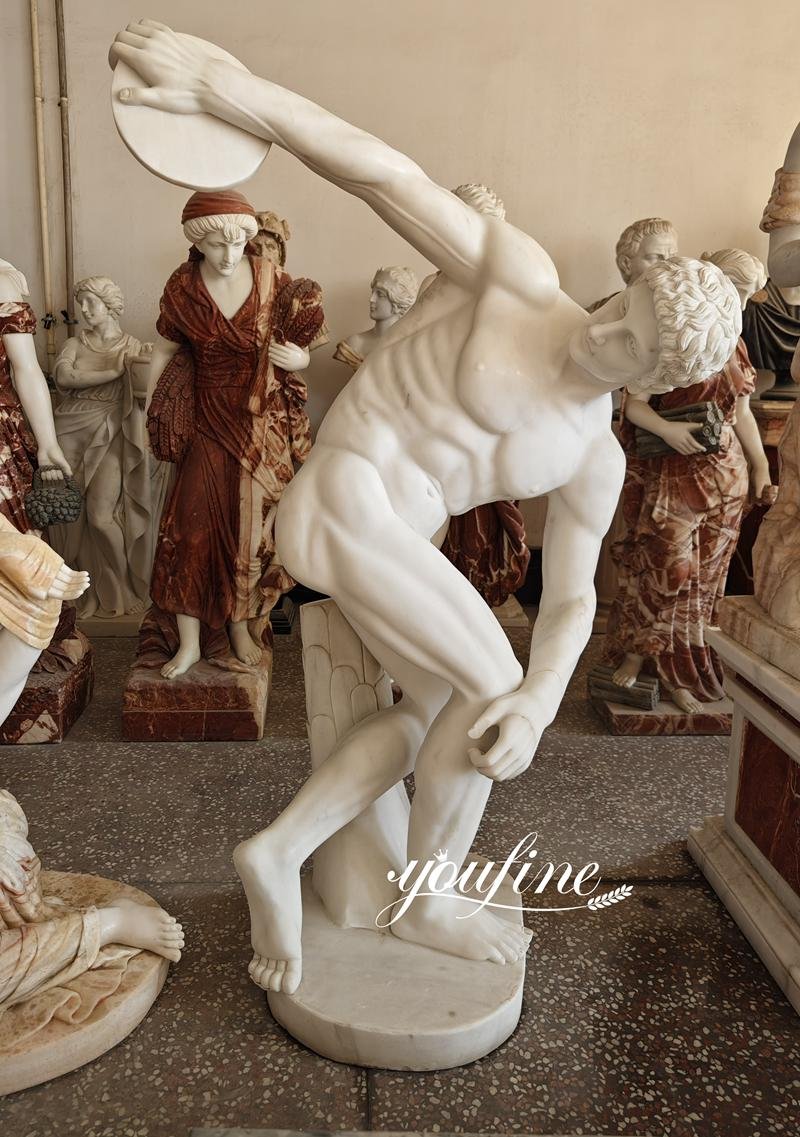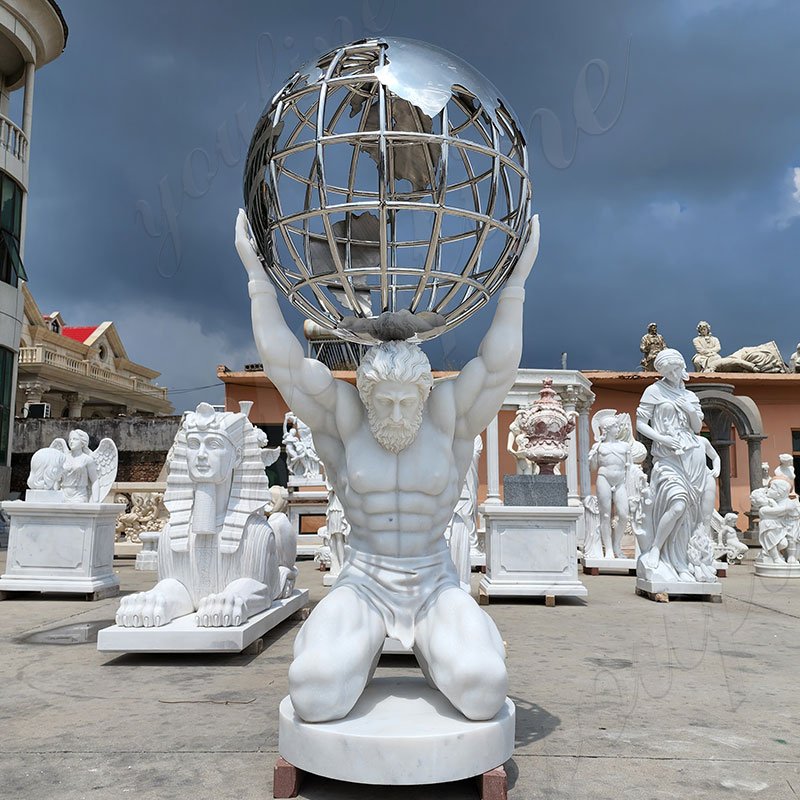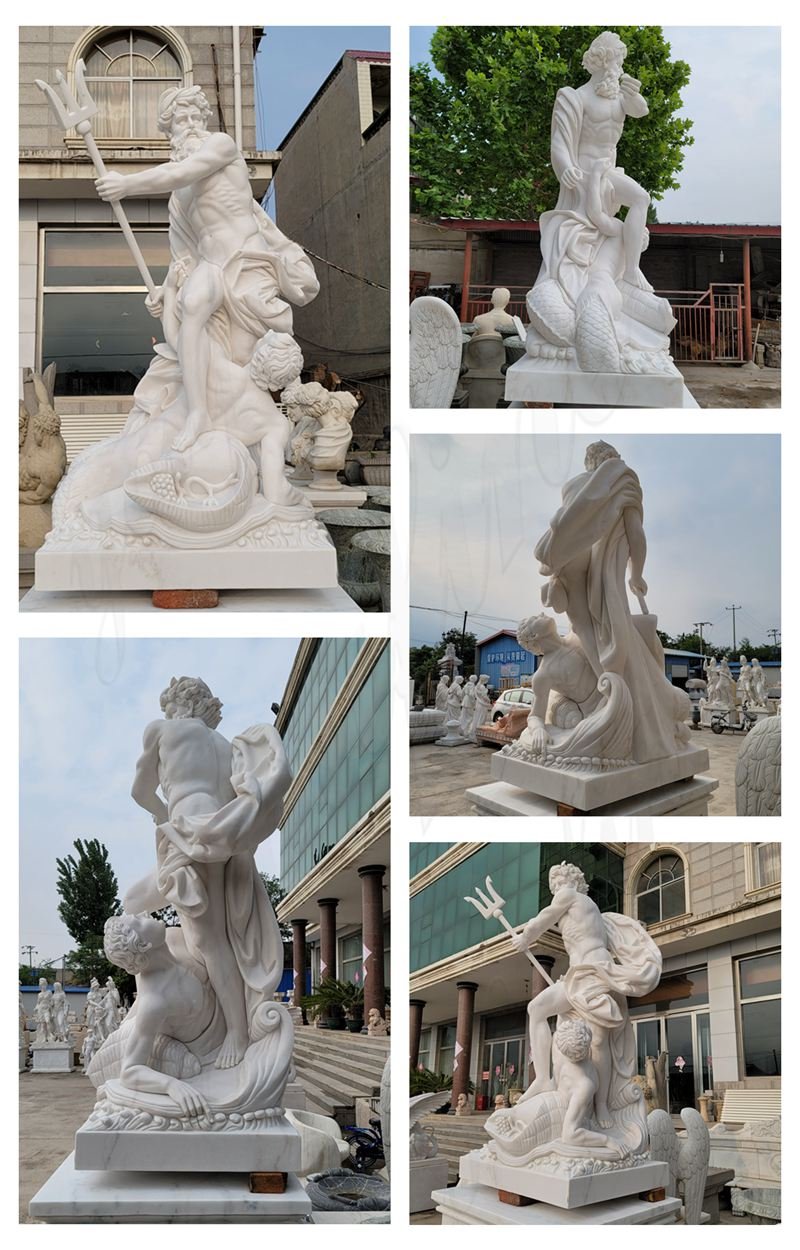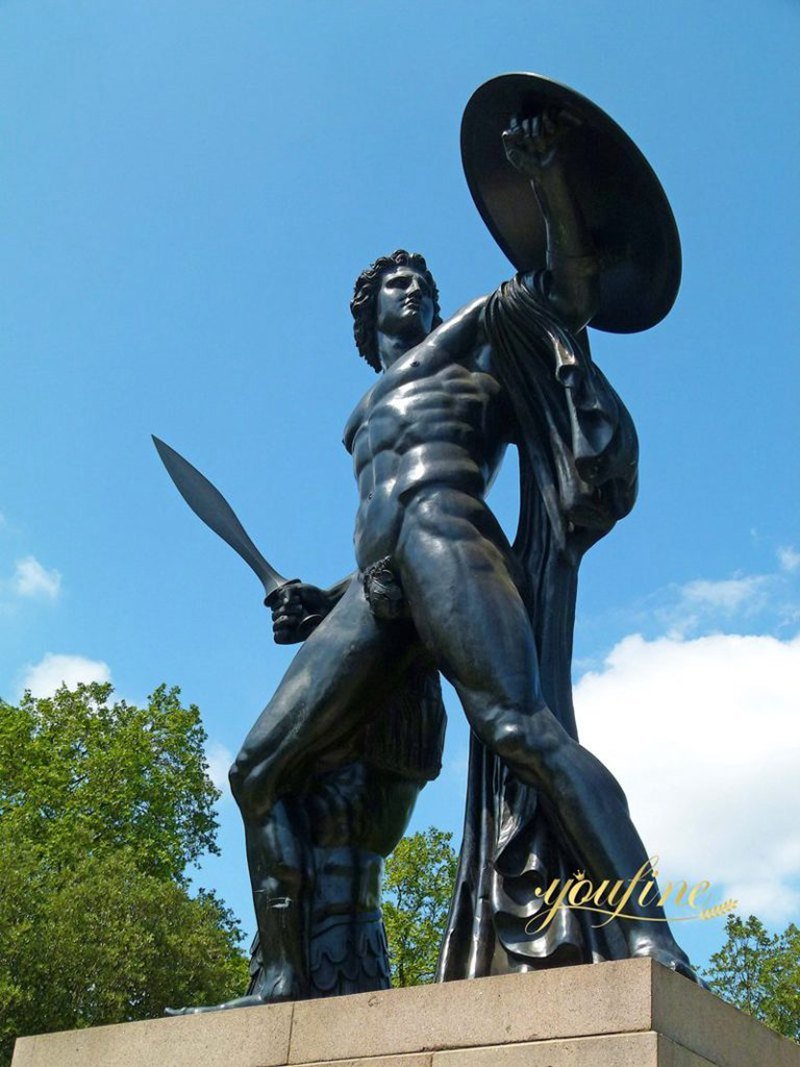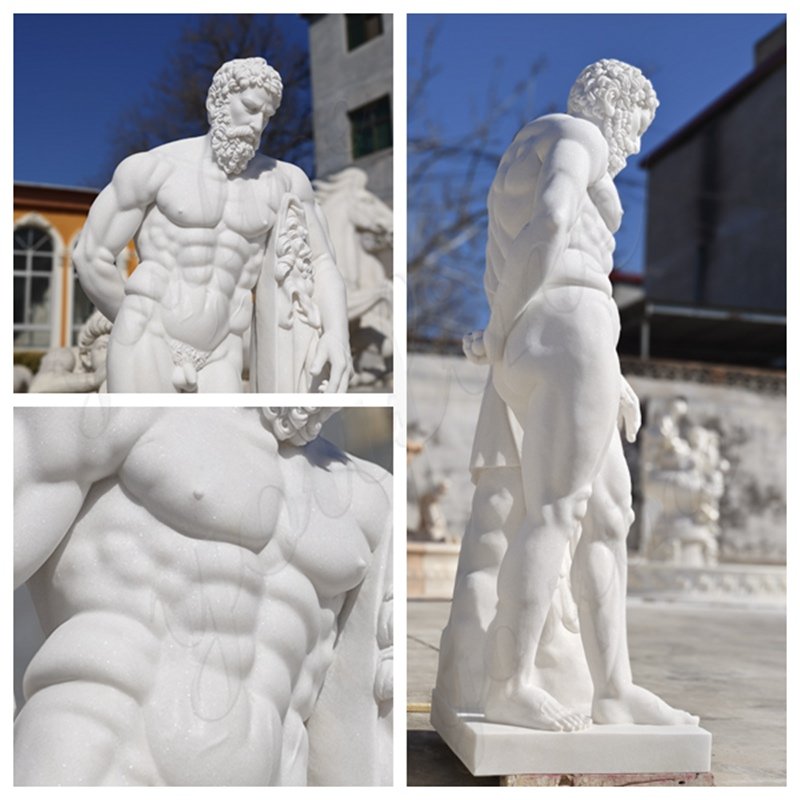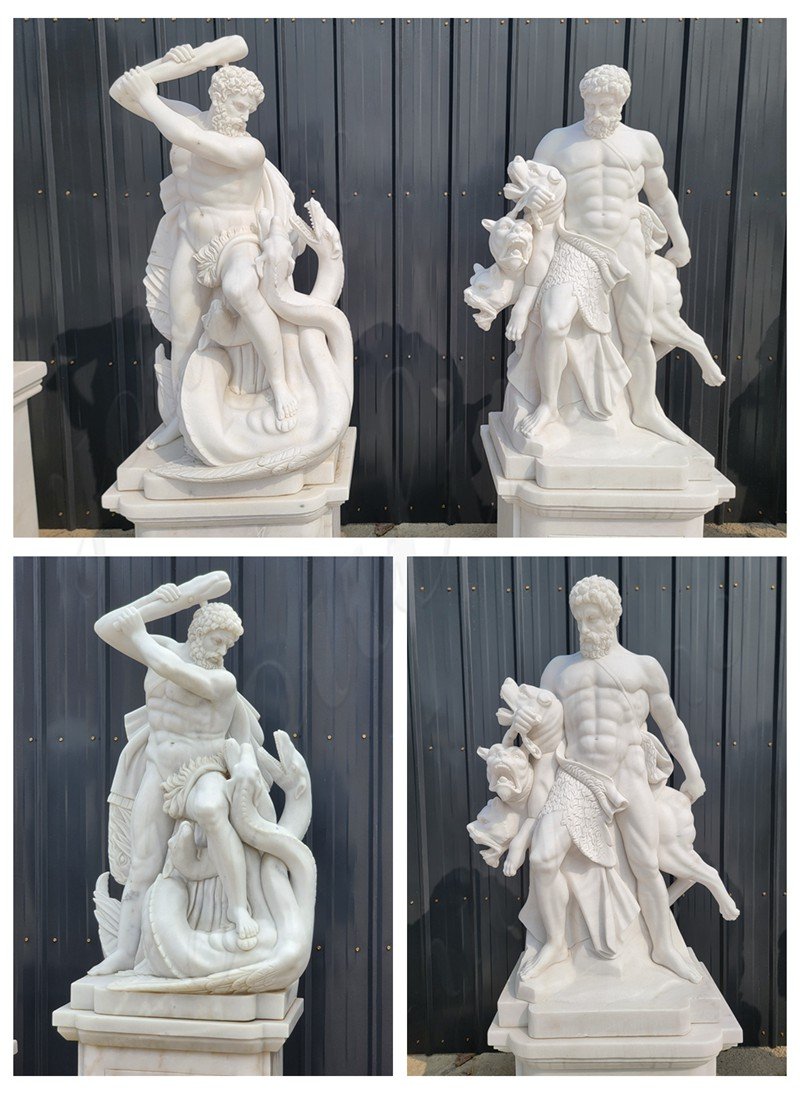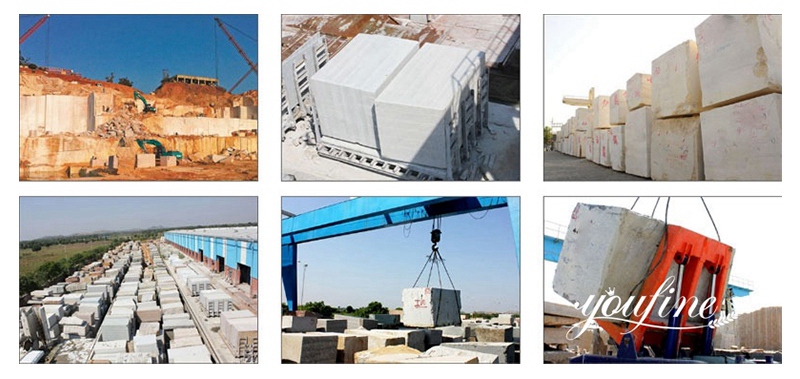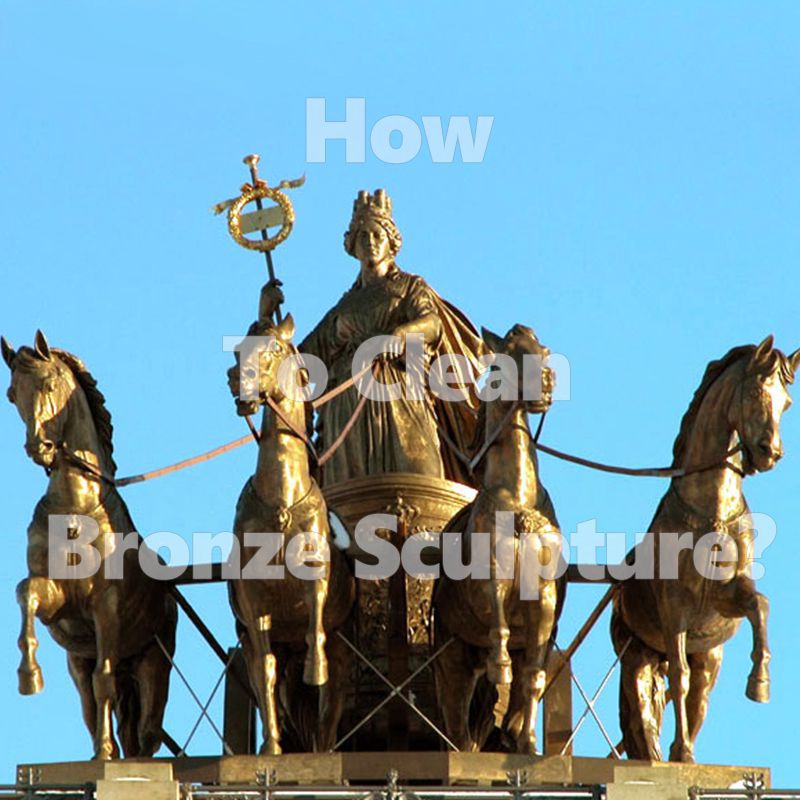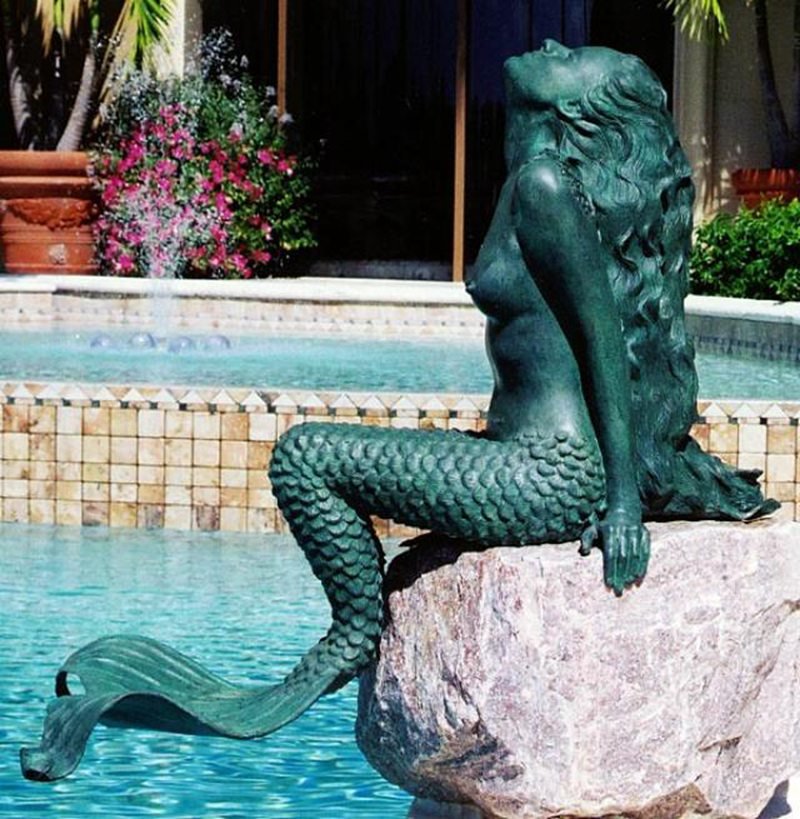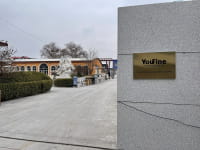Muscular Greek sculpture has always played an important role in the history of art and culture, and it is not uncommon to see muscular Greek sculpture in classic works of art. The well-developed muscles and perfect body proportions highlight the masculinity of men and the superb carving skills of artists. As people pursue a healthy lifestyle, more and more people prefer muscular Greek sculpture and use it as a popular choice for indoor or outdoor decoration.
Top 8 Hot-selling Muscular Greek Sculptures
Top1 Marble Discobolus Sculpture:
The original work of the discus thrower is the work of the ancient Greek artist Myron, depicting the action of the athlete in the ancient Greek Olympic Games raising the discus and about to throw it, which is very dynamic. Our marble Discobolus sculpture is a very perfect replica, with short and curly hair, eyes staring to the side, and the veins on the arms and the ribs and muscles on the body are very realistic. Through the sculpture, we can feel the athlete’s concentration and confidence.
Source From: Famous Greek Marble Discobolus Discus Thrower Myron Statue Replica for Sale
Top2 Marble Statue of Zeus:
Zeus is the god of thunder in ancient Greek religion and mythology. He is also revered as the father of heaven and the leader of the gods. Zeus is standing, half covered with clothes, revealing his solid muscles. He holds a scepter in one hand and a thunderbolt in the other. At his feet is a lifelike eagle with its wings spread out. The eagle has very thick feathers and its eyes are looking up, staring at Zeus quietly. This Zeus marble statue is very exquisite whether placed in a park or a personal villa.
Top3 Marble Laocoon and His Sons Sculpture:
The marble Laocoon and His Sons Sculpture depicts the Trojan priest Laocoon and his sons Antiphatus and Timbreus being attacked by a sea snake. It is known as the “typical symbol of human suffering” in Western art. Laocoon and his children are naked, muscular, and struggling hard. Through Laocoon’s painful eyebrows and his sons’ panicked expressions, we seem to be able to truly feel their fear.
Top4 Bronze Doryphoros Sculpture:
The Doryphoros is one of the most famous Greek sculptures of the Classical period, depicting a naked warrior standing, with a strong physique and well-developed muscles, originally carrying a spear on his left shoulder. One hand is slightly drooping, the other hand is raised up, one foot is standing straight, and the other foot is slightly backward and on tiptoe. The eyes are looking to the side. The bronze appearance gives the Doryphoros sculpture a sense of beauty that has been accumulated over the years.
Top5 Marble Atlas Holding the World Statue:
In Greek mythology, Atlas was a Titan who was sentenced to hold up the sky forever after the Titan War, so there is the following classic Atlas Holding the World Statue sculpture. This Atlas Holding the World Statue is different from other muscular Greek sculptures. It is made of a combination of marble and stainless steel. Atlas is muscular and kneeling on the ground, holding up a stainless steel globe with both hands, which perfectly combines the sense of power, the modernity of stainless steel, and the exquisiteness of marble.
Source From: Life Size Classical Marble Atlas Holding the World Statue for Sale
Top6 Marble Hercules and Diomedes Statue:
Hercules is famous for his great strength and long-distance adventures. This Marble Hercules and Diomedes Statue depicts the scene in which Hercules throws Diomedes to the man-eating mare in one of the twelve mythological works of Hercules. Hercules has fierce eyes and is strong and powerful. Diomedes is picked up and stretches one hand outward, trying to seek help.
Source From: Hand Carved Marble Hercules and Diomedes Statue for Sale MOKK-922
Top7 Marble Sea God Poseidon statue:
Poseidon is one of the twelve Olympian gods in ancient Greek mythology, in charge of the sea, storms, earthquakes and war horses. The sea god is holding a trident in both hands, with a trapped enemy under his crotch, and his front feet stepping on a conch. There are also waves on the marble base, and the clothes behind him seem to be frozen by the waves, with random and natural folds.
Source From: Garden Sea God Poseidon Marble Statue for Sale MOKK-831
Top8 Bronze Achilles Statue:
Achilles is a hero of the Battle of Tethys, known as the greatest warrior in Greece, and the central figure of Homer’s epic poem “The Iliad”. This life-size bronze Achilles statue is very spectacular. Achilles holds a dagger in his left hand and a shield in his right hand. He is naked, and his strong muscles and the firm expression on his face echo each other. The cape naturally hangs down from his arms to his feet, and the armor on his body is also placed on the side of his left leg, showing the heroic spirit of the hero to the fullest.
Source From: Outdoor Life Size Bronze Achilles Statue for Sale
Why are Greek Sculptures So Muscular?
In the Archaic era, Greek sculptures tended to depict young people with detailed, less-developed muscles. But in the early classical age, the style of Greek sculpture began to change. After winning the Persian War, the Greeks began to depict strong bodies to show their superiority and depicted the characters in the war as naked and muscular.
Muscles are a symbol of strength and status. Higher-level gods and heroes will be depicted as having strong bodies, and People of lower status, such as businessmen, are portrayed as obese. Therefore, people are more respectful of muscular Greek sculpture. At the same time, the advancement of science and technology has improved production efficiency, more sophisticated technology, and better depiction of muscle details.
Later, in the Roman era, with the intensification of war and interest in sports, the characteristics of muscular development in sculptures became more prominent.

Are the Muscles of the Greeks Really That Developed?
The answer is no. The Greeks were not supermen, and the typical muscular image was an idealized expression in most cases. But compared to us, their bodies were more strong. On the one hand, they had limited food and eat less food. On the other hand, their emphasis on the Olympics made sports more common for them. They carried out sports training in various forms such as running, wrestling, jumping, throwing discus, lifting stones, etc.
How Much Does a Muscular Greek Sculpture Cost?
The price of a muscular Greek sculpture mainly depends on the following factors: material, size, craftsmanship and detail requirements, artist fame/factory reputation, whether it is an original or a replica, whether it is customized, and market popularity.
Material:
Muscular Greek sculpture can be used for different materials, such as marble and bronze. For high-quality materials, the corresponding muscular Greek sculpture price will be higher.
Size:
The smaller the size, the cheaper the muscular Greek sculpture price. For example, ordinary desktop small pieces cost hundreds of dollars, but life-size or larger sizes generally range from thousands to tens of thousands of dollars.
Craftsmanship and Detail Requirements:
If you have higher standards for the details and craftsmanship of muscular Greek sculpture, such as high restoration, the corresponding price will be higher.
Artist Fame and Factory Reputation:
For muscular Greek sculpture, the higher the artist’s fame and the higher the factory’s reputation in the industry, it means that your muscular Greek sculpture will be better, the quality will be more guaranteed, and the corresponding price will be higher.
Original/Replica:
The price of the original muscular Greek sculpture will be very high due to the artist’s reputation and rarity, usually tens of thousands or even hundreds of thousands of dollars. However, the price of a replica of a muscular Greek sculpture will be much lower.
Whether It is Customized:
Customized muscular Greek sculpture can play a better role in meeting personalized needs, so the price of more special sculptures will be more expensive.
Market Popularity:
muscular Greek sculpture may have different popular trends at various times. Generally speaking, the more popular the sculpture product, the more demand there is and the higher the price.
How to Make Muscular Greek Sculpture Realistic?
Artists with Exquisite Craftsmanship.
The artists are required to have sufficient experience, precise control of the details of the characters, and be good at multi-faceted learning and research. Our artists are all from sculpting families, their craftsmanship has been passed down through thousands of years, and their fathers were originally engaged in royal garden sculpture.
When making muscular Greek sculpture, YouFine artists will first make a clay model of the same proportion, and with the help of a silicone mould, the muscles, eyes, eyebrows, and veins on the body of the character can be made more fined.
High-quality Raw Materials.
Compared with muscular Greek sculptures made of plaster or marble powder, natural marble or high-purity bronze can better highlight the exquisiteness of the sculpture itself, and it will be more vivid visually.
As a professional art sculpture factory, for marble, we have purchased a lot of natural marble materials in advance, which are superior in both color and quality. For bronze, our artists will use high-quality bronze in the casting process and the bronze content is as high as 80%, which further guarantees the quality of muscular Greek sculpture.
Therefore, if you want to get high-quality marble muscular Greek sculpture or bronze muscular Greek sculpture to decorate your home, gallery, and other places, YouFine Art is your best choice.

